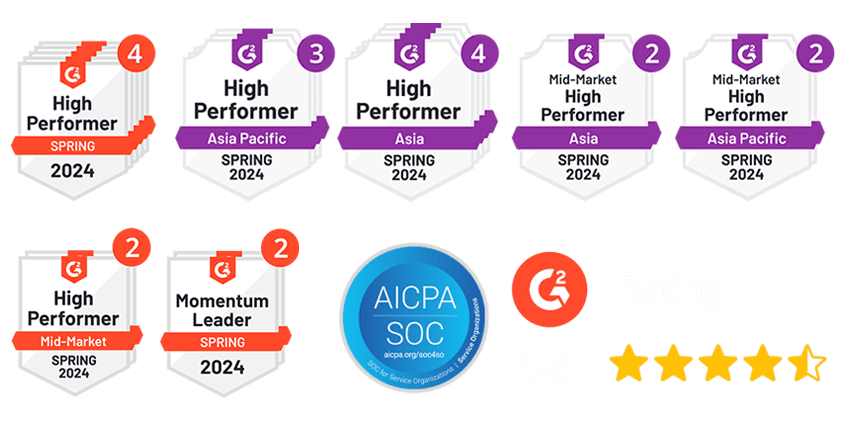Understanding the difference between disbursement and reimbursement is crucial for managing finances, whether you’re handling personal money, running a business, or managing government budgets.
Disbursement refers to paying out money from a central fund. It’s an essential part of ensuring that financial transactions go smoothly. On the other hand, reimbursement means getting repaid for expenses you’ve already paid. This often happens after an initial disbursement.
In this blog, we’ll explore what makes disbursement and reimbursement different and provide examples of how they’re used.
What are Disbursements?
A disbursement is when money is paid out or given to someone. This can include paying bills, settling loans, paying suppliers, or giving salaries to employees.
Disbursements happen in many settings, like personal finance, business operations, government spending, and financial institutions such as banks and investment firms.
Businesses and financial entities closely monitor disbursements to ensure that funds are allocated according to budgetary or contractual obligations. Maintaining accurate records and tracking disbursements is crucial for effective financial management, accountability, and compliance with financial regulations and commitments.
Examples of Disbursement
Here are five examples of disbursements in different scenarios:
Government Infrastructure Project Funding
For a government-funded construction project, the government gives money to contractors and construction companies. This money covers things like building materials, labor, and equipment. The funds are released at different stages of the project to keep things on track.
Corporate Employee Benefits Disbursement
A big company pays out money for employee benefits such as health insurance, retirement plans, and bonuses. The company carefully manages these payments to follow contracts and legal rules. It’s important to keep accurate records so every employee gets the benefits they’re supposed to receive.
Higher Education Financial Aid Disbursement
In universities, financial aid is given to students to help with tuition, books, and living expenses. This aid helps students study without immediate financial worries. The process includes checking if students are eligible and making sure the money is used for educational needs.
Nonprofit Grant Allocation
A nonprofit group gets a grant from a foundation to fund a community project. The grant money is given in parts, based on project progress. The nonprofit must regularly report how they are using the funds to show they’re being used effectively.
Insurance Claim Disbursement
When someone makes a valid insurance claim, like for a car accident, the insurance company pays out money to cover repair costs or the value of the car. The company assesses the claim, decides who is at fault, and quickly provides the funds needed for repairs or replacements.
Types of Disbursement
Let’s take a look at the different types of disbursement:
Cash and Electronic Disbursements: Cash disbursements are payments made with physical money, such as cash or checks. Electronic disbursements are payments made electronically, using methods like wire transfers or ACH payments.
Controlled Disbursement: Payments that need approval before they can be processed are often used for large or high-risk transactions. Banks provide controlled disbursements to companies, letting them review and manage payments daily to better manage their cash flow.
Delayed Disbursement: Remote disbursements, also known as delayed payments, aren’t processed right away. They’re often used for transactions that are on hold or set for a future date. With the rise of electronic transfers, these types of payments are becoming less common.
Loan Disbursement (Positive and Negative): Positive disbursement means the borrower gets the approved funds, so their account gets credited. Negative disbursement happens when extra financial aid is taken out, which debits the account. Disbursement accounts are special bank accounts where lenders send approved loans and funds to borrowers.
What is Reimbursements?
Reimbursement is when you get paid back for money you’ve already spent. It’s like getting compensation for expenses you covered out of your own pocket. This usually happens after you’ve initially paid for something. People and businesses often seek reimbursement for things like travel costs, work-related purchases, or expenses paid by employees.
Companies usually have rules about what expenses can be reimbursed and what proof, like receipts, you need to provide. Reimbursement ensures that people are fairly paid back for their actual costs, in line with the company’s policies.
Just like with disbursements, keeping good records and following the reimbursement rules is important for managing money well and staying compliant. This helps businesses control budgeting, keep accurate records, and fulfill their commitments to employees and others.
Examples of Reimbursements
Here are five examples of reimbursement scenarios:
Business Travel Expenses
When an employee travels for work, they often pay for things like flights, hotels, meals, and transportation on their own. After the trip, they submit a request for reimbursement to the company’s finance team with all the receipts. The company then pays them back for these expenses.
Educational Expenses for Employees
Some companies offer tuition reimbursement as a benefit. If an employee takes a course and pays for it themselves, they can submit proof of payment to the company. If the company approves it, they will reimburse the employee for the course costs.
Healthcare Expenses
If someone has medical expenses that aren’t covered by their insurance, like co-pays or prescription costs, they pay for them first. They then submit a claim with receipts to their insurance company. After checking the expenses, the insurance company will reimburse them for the covered costs.
Home Office Setup for Remote Work
With more people working from home, employees may need to buy items like a desk and chair. If the company has a reimbursement policy, employees can submit receipts for these purchases. The company will then reimburse them for the approved expenses.
Nonprofit Project Expenses
Volunteers working on a community project might pay for things like materials and supplies. They can submit a request for reimbursement with their receipts. The nonprofit organization reviews these requests and, if they meet the project’s goals, reimburses the volunteers for the expenses.
Types of Reimbursement
Let’s take a look at the different types of reimbursements.
- Business Expense Reimbursement: Companies often pay employees back for work-related expenses based on daily rates set by the government. These rates can change depending on where the employee is and their job duties.
- Insurance Reimbursement: If you pay for medical expenses out of pocket and can’t contact your insurance right away, you can be reimbursed later. This happens when your insurance requires you to pay first and then get reimbursed.
- Tax Refund: A tax refund is money returned to you if you’ve paid more taxes than needed. It’s not extra income but a return of your own money, so it’s important to calculate your taxes carefully.
- Reimbursement Alimony: In some divorce cases, one ex-spouse may be required to pay the other for supporting their education or career. This payment is decided by the court and is part of the divorce settlement.
Disbursement vs Reimbursement: Key Differences
Disbursement and reimbursement might seem similar, but they’re actually different. Disbursement is when you give out money or make a payment. Reimbursement is when you get paid back for something you’ve already paid for.
The main difference is that disbursement means sending money out, while reimbursement means getting that money back.
For tax and financial rules, disbursements and reimbursements are handled differently. Reimbursements must follow specific tax regulations, like VAT registration, but disbursements don’t have those strict rules.
When a business makes a disbursement on behalf of a client, the client then reimburses the business. This repayment might include things like discounts or interest fees, depending on what was agreed upon.
It’s important to classify payments correctly, especially if a business is near a tax limit. For a payment to be considered a disbursement, it needs to meet certain conditions:
- You had permission from the client to pay on their behalf.
- The client got the benefit of what you paid for.
- You acted as the client’s agent when making the payment.
- The client knew the goods or services came from another supplier, not you.
- You separate the costs clearly on the invoice when billing the client.
- It was the client’s responsibility to pay for the goods or services, not yours.
- You pass on the exact amount of the expenses when invoicing the client.
Knowing when to disburse funds and when to expect reimbursement is crucial for effective cash flow management in business.
Disbursement vs Reimbursement: Best Practices
- Setting clear policies is key for handling both disbursement and reimbursements. This helps make sure everything aligns with internal rules and outside regulations.
- Using automation software can make managing these tasks more efficient, reduce mistakes, and provide better financial oversight.
- Both disbursement and reimbursement processes should be transparent. There should be systems to hold people accountable and prevent misuse of funds.
- Regular audits and reviews of these processes help spot areas for improvement and ensure that financial practices are followed properly.
- Properly managing payments and reimbursements is essential for maintaining financial integrity and running a business smoothly.
Closing Thoughts
Is your company frequently handling disbursement or reimbursement transactions?
With Peakflo’s Auto Disbursement, you can streamline the entire process. This feature enables automatic payouts according to bill due dates, freeing up your finance team from the time-consuming task of manually processing each payment. By scheduling payments in sync with due dates, you not only simplify the process but also receive instant notifications to stay updated on payout statuses.











































